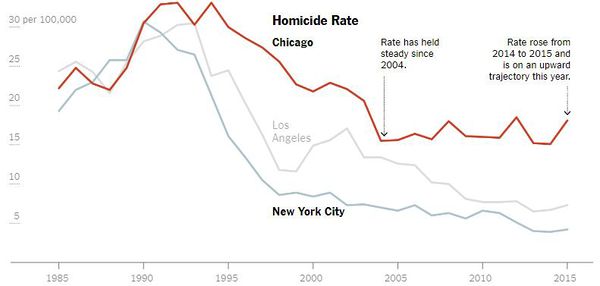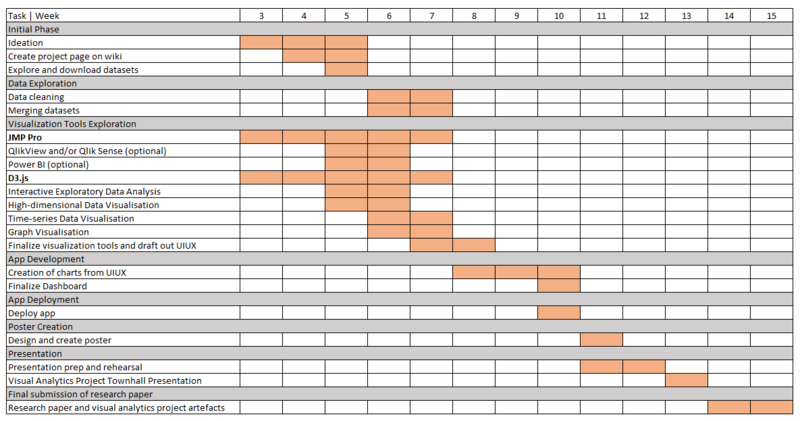|
|
| Line 245: |
Line 245: |
| | | | |
| | <div style="margin-top:50px; margin-bottom:20px; font-weight: bold; line-height: 0.3em; letter-spacing:-0.08em;font-size:24px"><font color=#1d1d1d face="Century Gothic">Proposed Storyboard</font></div> | | <div style="margin-top:50px; margin-bottom:20px; font-weight: bold; line-height: 0.3em; letter-spacing:-0.08em;font-size:24px"><font color=#1d1d1d face="Century Gothic">Proposed Storyboard</font></div> |
| | + | |
| | + | <div style="margin-top:50px; margin-bottom:20px; font-weight: bold; line-height: 0.3em; letter-spacing:-0.08em;font-size:24px"><font color=#1d1d1d face="Century Gothic">Project Timeline</font></div> |
| | + | [[File:Project Timeline.png|800px|frameless|center]] |
Revision as of 00:42, 19 November 2018
INTRODUCTION
The Olympic Games can be traced back to 776BC and were dedicated to the gods of Olympia. Today, the Olympic Games has become the world’s largest sports competition, with more than 200 nations participating every four years. The Olympic Games provide an international platform for sportsmen from all walks of life and origins to display their skills and be rewarded for their persistence and dedication to the sport. All athletes participating in the Olympics stand a chance to attain national and possibly, international fame.
PROBLEM & MOTIVATION
The Summer Olympics prides itself on the culture of competition, friendship and fairness. However, during its history, the quadrennial event have also experienced the phenomenon of Olympic Dynasties, whereby certain sport events are dominated by a particular Continent or Country. Amongst avid fans of the Summer Olympics, dominance is a common occurrence in the sporting world. Nevertheless, many are still unaware of the severity of this issue. The current state of the Summer Olympics largely represents a monopoly with Olympic Dynasties in total control. Is there any more reason to watch the Summer Olympics if it’s mostly a one-team race?
Meanwhile, host countries often fared better in the Summer Olympics they hosted in. Could the phenomenon of a Home Ground Advantage exist in such a prestigious event? The severity of such a phenomenon directly contradicts the values of the Summer Olympics.
Objectives
The goal of this project is to create a visualisation that educates the public about the:
- Severity of Dominance of Continents in various sports
- Severity of Dominance of Countries in various sports
- Severity of Bias for the Host Country
Dataset
| Athletes and Results
|
| Medal results, and basic biological data of participants of the Athens 1896 to Rio 2016 Games. | Source
|
| Variable Name
|
Data Type
|
Sample
|
| ID |
integer, primary key |
1
|
| Name |
string |
Lebron James
|
| Sex |
string |
M
|
| Age |
integer |
24
|
| Height |
integer |
180
|
| Weight |
integer |
80
|
| Team |
string |
United States
|
| NOC |
string |
USA
|
| Year |
date |
1992
|
| Season |
string |
Summer
|
| City |
string |
Barcelona
|
| Sport |
string |
Basketball
|
| Event |
string |
Basketball Men's Basketball
|
| Medal |
string |
Gold
|
|
| NOC Code and Country
|
| National Olympic Committee 3 letter code for each country | Source
|
| Variable Name
|
Data Type
|
Sample
|
| NOC Code |
string |
AHO
|
| Country |
string |
Curacao
|
| Notes |
string |
Netherlands Antilles
|
|
| World Countries and Continents Details
|
| World countries with their corresponding continents , official english names, official french names, Dial,ITU,Languages and so on. | Source
|
| Variable Name
|
Data Type
|
Sample
|
| Name |
string |
Afghanistan
|
| Continent |
string |
AS
|
|
| Host Countries for Past Olympic Seasons
|
| Olympic seasons along with data on the world countries which hosted it, the year and the city it was held in | Source
|
| Variable Name
|
Data Type
|
Sample
|
| City |
string |
Athens
|
| Country |
string |
Greece
|
| Year |
date |
1896
|
|
Background Survey of Related Works
| Winter Olympics 2018: Which Country Leads in the Medal Count?
|
|
|
| Description
|
| The best country in the Olympics is a subjective statement, and often depends on how one counts the worth of a medal. A gold medal could be worth 200 silver medals or could be equal in terms of value. In this visualisation by Josh Katz, the countries are ranked by ingenious use of interactivity – as the reader hovers over the charts, the worth of the medals change, and the rankings of the countries are dynamically updated.
|
| Learning Points
|
| During our search of Olympic Dynasties, it is important to realise that the rankings of countries are subjective, and therefore, the definition of dominance is subjective. Using advanced methods of interaction, we can cater to various definitions of dominance by varying the inclusion or exclusion of silver and bronze medals.
|
| Source
|
| https://www.nytimes.com/interactive/2018/02/14/upshot/which-country-leads-in-the-olympic-medal-count.html
|
| Olympic Feathers
|
|
|
| Description
|
| More than 5000 Olympic events have had a winner in the Summer Olympics since the first games of 1896. In Olympic Feathers you can investigate how each of these medals has been won in the 56 different sporting disciplines that have competed at the games, of which 41 are still held at Rio 2016.
|
| Learning Points
|
- using a "sunburst" style time-series is extremely effective in showing year-by-year change
- combine sports by a certain theme
- use mini arcs to display medals
|
| Source
|
| https://www.visualcinnamon.com/portfolio/olympic-feathers
|
| Russia's surprise meteor and Earth's craters
|
|
|
| Description
|
| This map uses proportional symbols to represent the largest known craters to have marked our Earth. The legend shows two sizes that are representative of symbol sizes on the map. The largest crater is 99.4 miles in diameter (in South Africa) and, appropriately, the largest symbol size used in the legend represents a crater with a 99-mile diameter. The smaller symbol in the legend represents a 20-mile diameter, and although there are craters with smaller diameters on the map, it is easier to visually see the differences with smaller symbol sizes. The earth is marked with about 180 named craters that are scars from previous run-ins with asteroids like the one that exploded over Russia recently. This map was designed to be interactive, as the map user can hover over the symbols and see the particular size, place and age of the craters.
|
| Learning Points
|
- Magnitudes of a variable can be represented by the size of dots. We can potentially use this concept to display medal count for each country
- Highlights the importance of an example in the legend to provide a point of reference for the dot size. Basically, we should provide a visual guide.
|
| Source
|
| http://www.washingtonpost.com/wp-srv/special/world/russia-meteor/index.html
|
| Predicting the Next Bear Market in Six Charts
|
|
|
| Description
|
| This is an e-article by The Wall Street Journal that incorporates journalism and news-reporting with visualisations, providing the reader a data-driven view, while providing a standard text-based reporting style.
|
| Learning Points
|
- Instead of the typical dashboard to display visualisations, we can incorporate a "newsarticle" format
|
| Source
|
| https://www.wsj.com/graphics/bear-market-signs/?ns=prod/accounts-wsj
Note: Wall Street Journal account is required
|
Proposed Storyboard
Project Timeline






